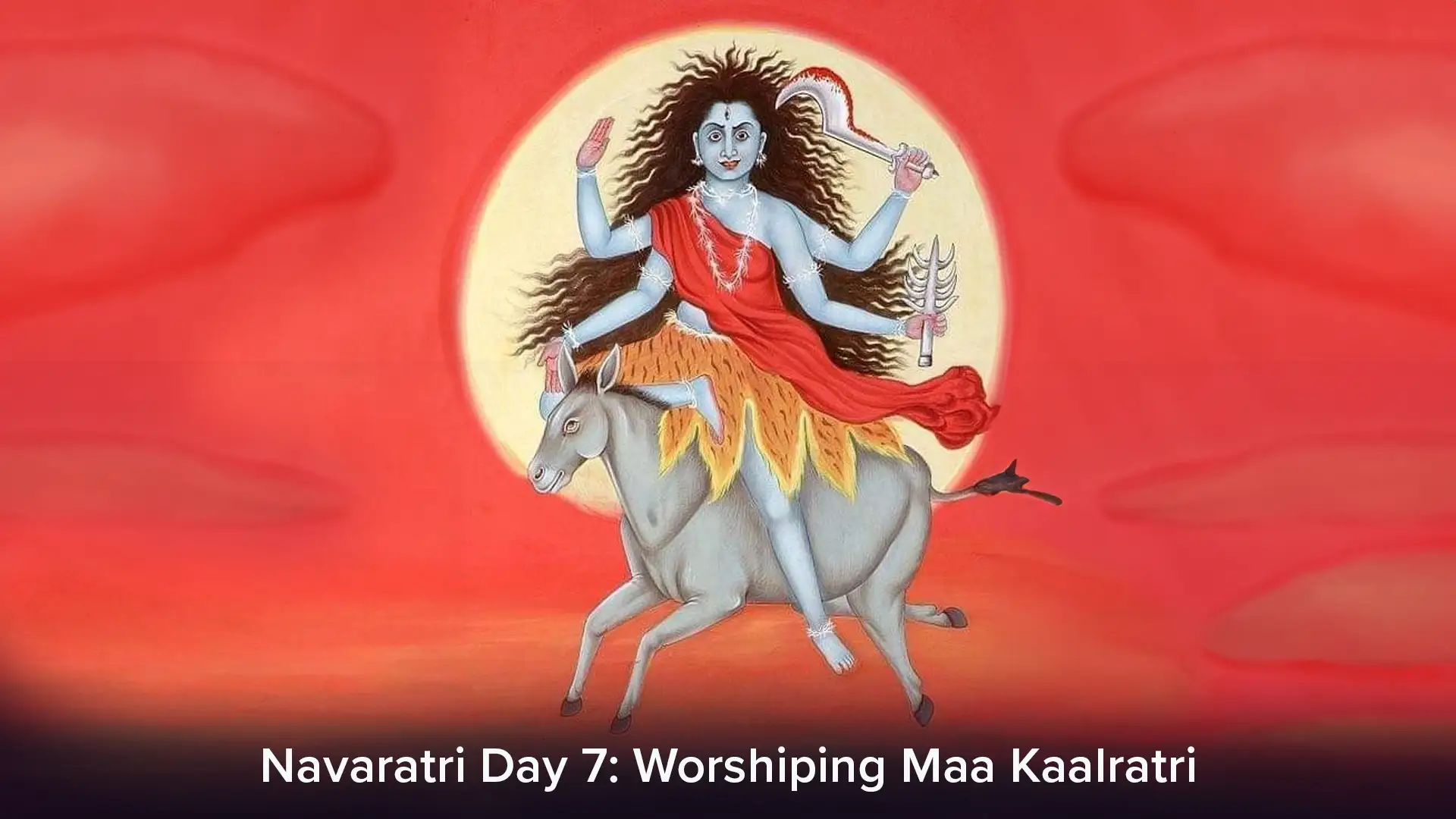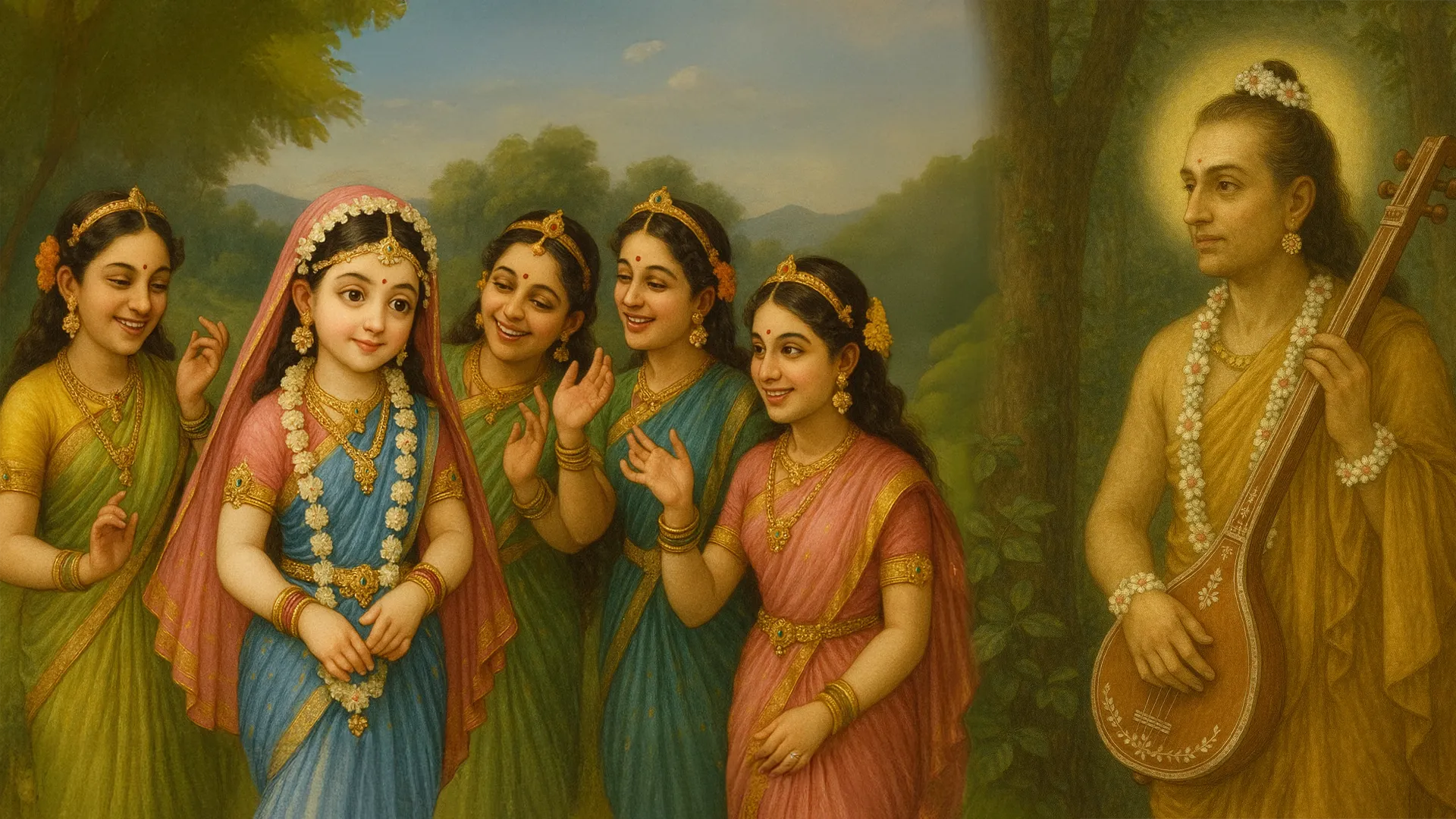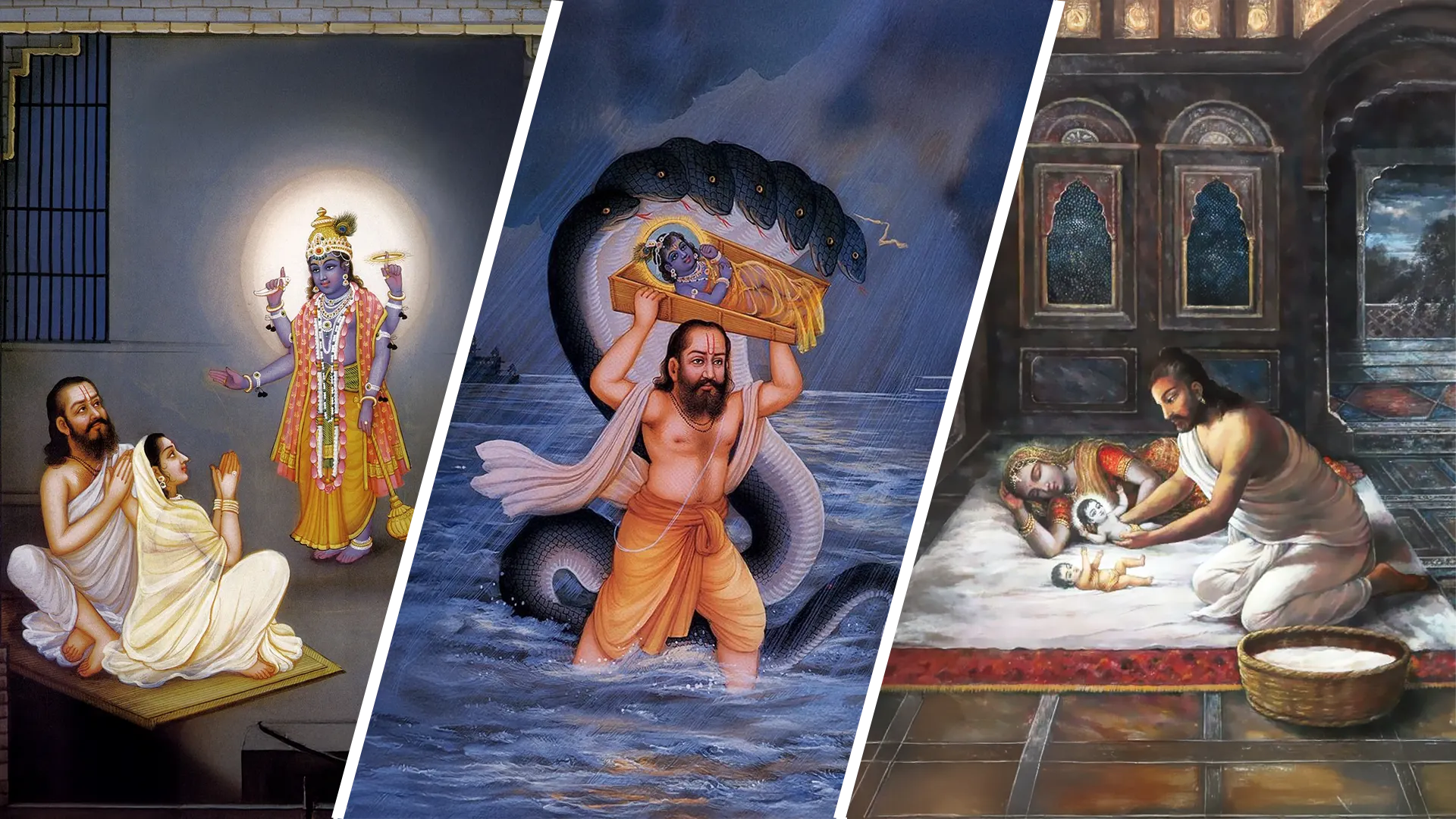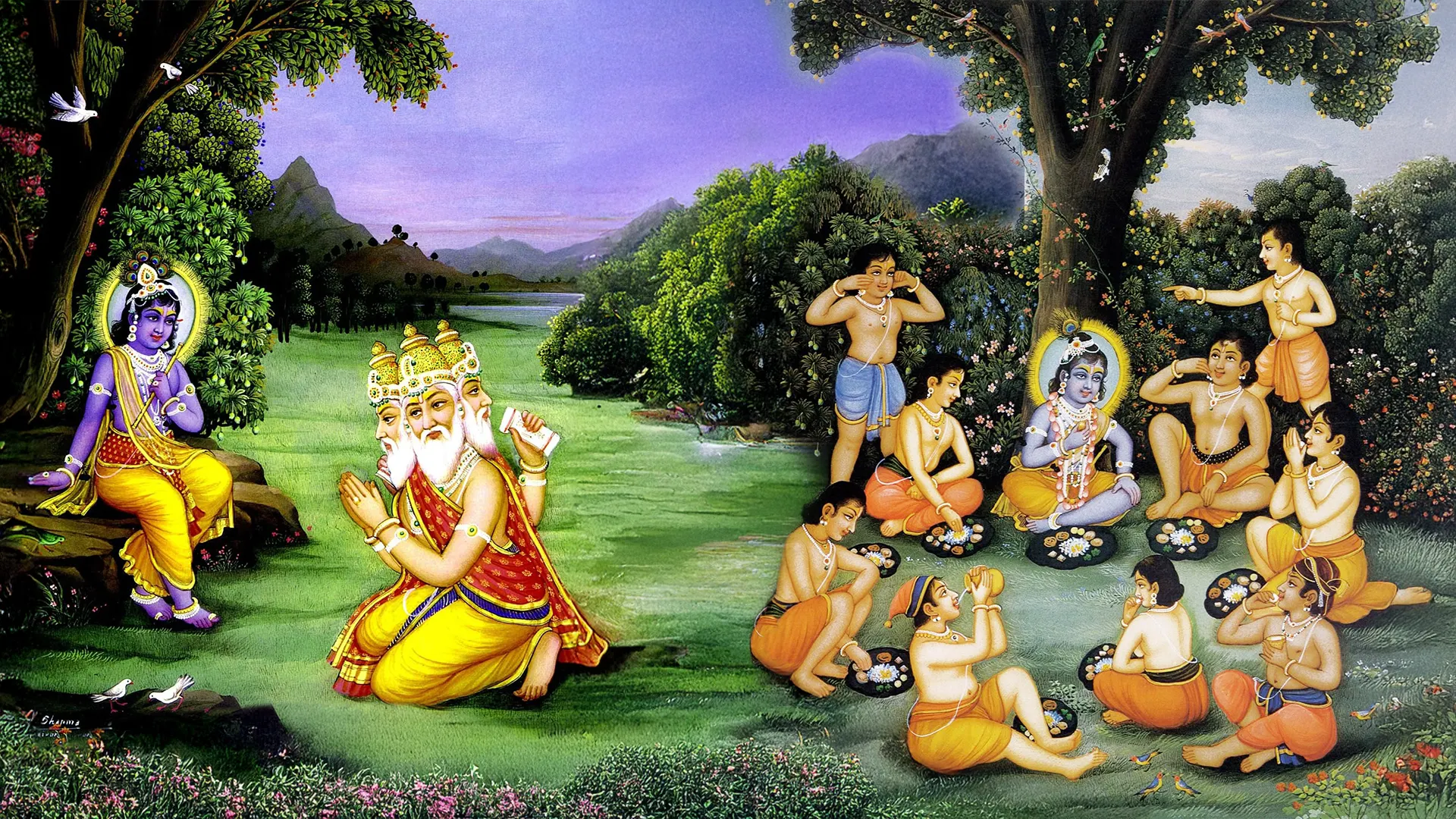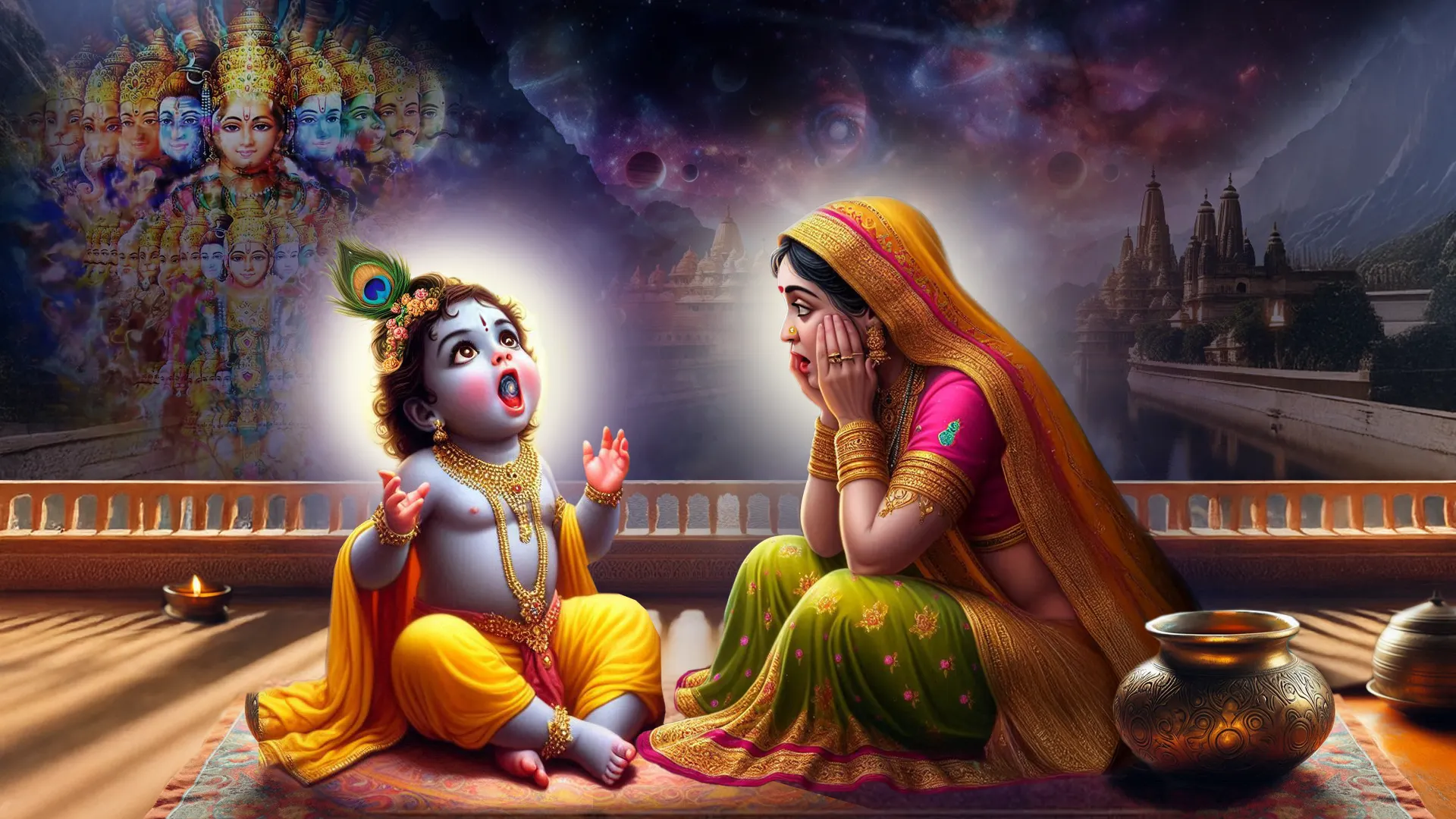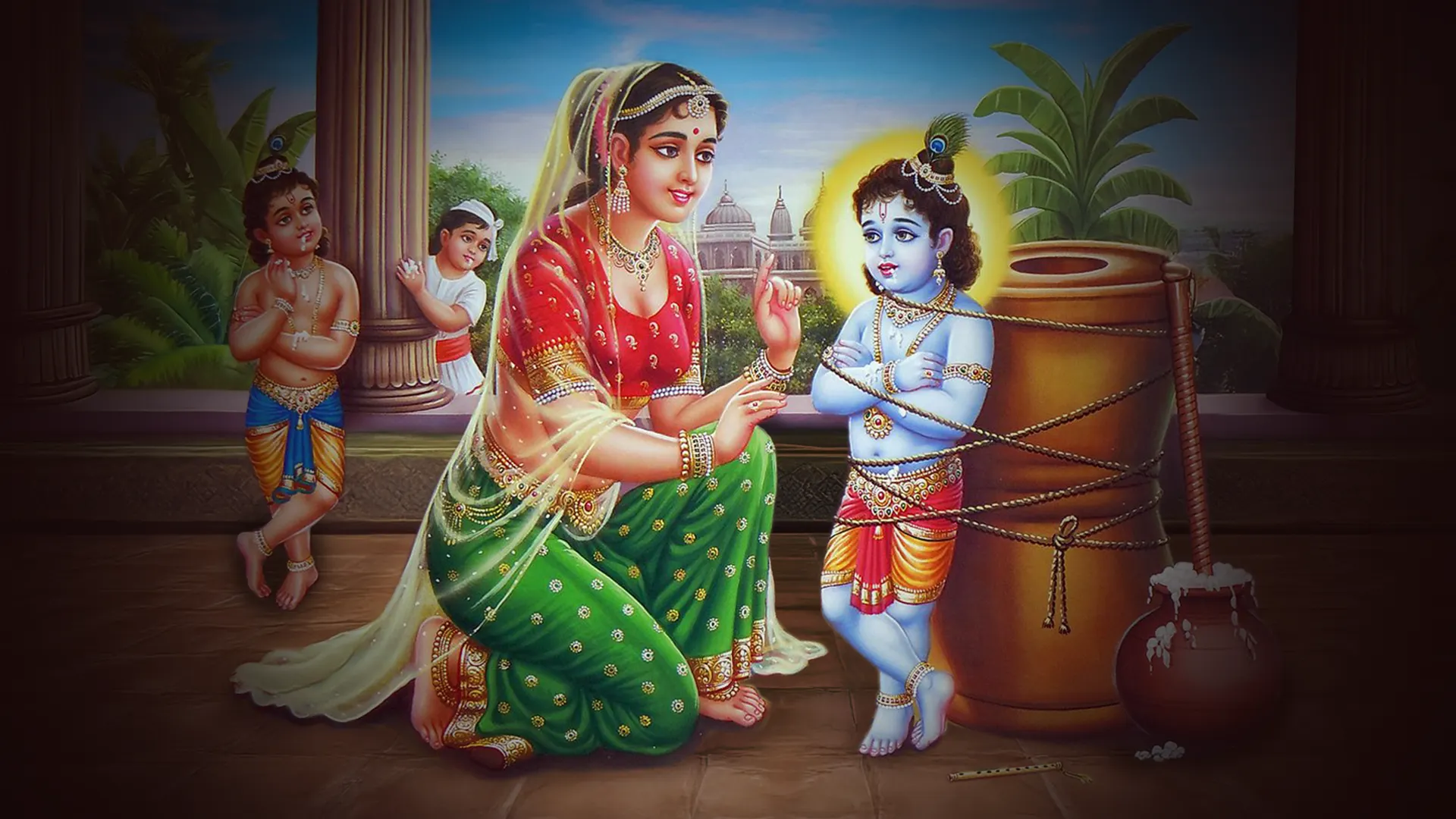On the seventh day of Navaratri, Maa Kaalratri, a formidable and awe-inspiring form of the Goddess, is venerated. The name "Kaalratri" (Kālarātri/कालरात्रि) is a fusion of "kaal" (Kāla/काल), which means time or death, and "ratri" (rātri/रात्रि)means night or darkness or ignorance. Thus, Kaalratri embodies the force that brings an end to darkness, signifying the emergence of light and wisdom. She is also commonly called "Kaali," emphasizing her formidable nature.
The Goddess Maa Kaalratri is known to be the most fearsome manifestation. Her dark complexion represents her intense and unyielding nature. She is depicted with four arms, holding a kripan (scimitar) and a vajra (thunderbolt) in two hands, while the other two remain in the mudra of giving and protection. Her three eyes see all, piercing through the darkness. Flames emanate from her nostrils when she breathes, embodying her unwavering determination.
Maa Kaalratri's necklace shines like the moonlight in the night sky, and her hair flows freely, representing her wild and untamed nature. Unlike other goddesses, she chooses to ride a donkey, a unique decision that emphasizes her individuality. It's important to note that despite her fierce appearance, Maa Kaalratri is a kind goddess who bestows her devoted worshippers with auspicious blessings. Her various names, such as "Bhayakarini" (the eliminator of fear) and "Shubhankari" (the performer of good deeds), highlight the dual nature of her character, indicating that even in the darkest of moments, there's always a glimmer of hope and prosperity.
Rituals and Worship of Maa Katyayani
The worship of Maa Kaalratri involves unique evening rituals, which hold a distinctive significance. During the worship, Maa Kalratri is placed on a red blanket, symbolizing her fierce yet benevolent nature. The sacred space is sanctified with Ganga water, and under the soft glow of a ghee lamp, family members sing bhajans and strotras. Devotees offer Roli, Akshat, and Chandan fragrant Ratrani flowers and jaggery. The Aarti follows, lighting a camphor or a lamp accompanied by chants and bhajans. Reciting the Durga Chalisa or Durga Saptashati and chanting Maa Durga's mantras deepens the spiritual experience. Red sandalwood or Rudraksha malas are used for the mantra recitation.
The Epic Tale of Maa Kaalratri: A Story of Bravery and Divine Intervention
The story of Maa Kaalratri's origin is nothing short of a thrilling adventure filled with bravery and divine intervention. It all began when the asuras Shumbha and Nishumbha attacked Devlok, defeating Indra and his companions. In a desperate attempt to seek help, Indra turned to Maa Parvati, who created the mighty Chandi to aid the devatas. But things took an unexpected turn when Shumbha and Nishumbha sent Chanda and Munda to fight Chandi.
However, Chandi was not alone. She summoned the fierce and fearless Maa Kaalratri with unwavering determination to face the challenge, who rose to the occasion and eliminated Chanda and Munda, but the battle was far from over. Enter Raktabeej, a powerful asura with a formidable boon that allowed him to regenerate each time a drop of his blood touched the ground. This presented a monumental challenge, but Maa Kaalratri was not one to back down. She was incensed and determined to end Raktabeej's menace once and for all.
With her unmatched strength and unwavering courage, Maa Kaalratri devoured every drop of Raktabeej's blood, preventing it from touching the ground and leading to his ultimate defeat. And with that, Chandi defeated Shumbha and Nishumbha, freeing Devlok from the oppressive rule of the asuras.
This epic tale of bravery and divine intervention is a testament to the indomitable spirit of Maa Kaalratri, who fearlessly protected the heavens and restored peace to the celestial realms.

